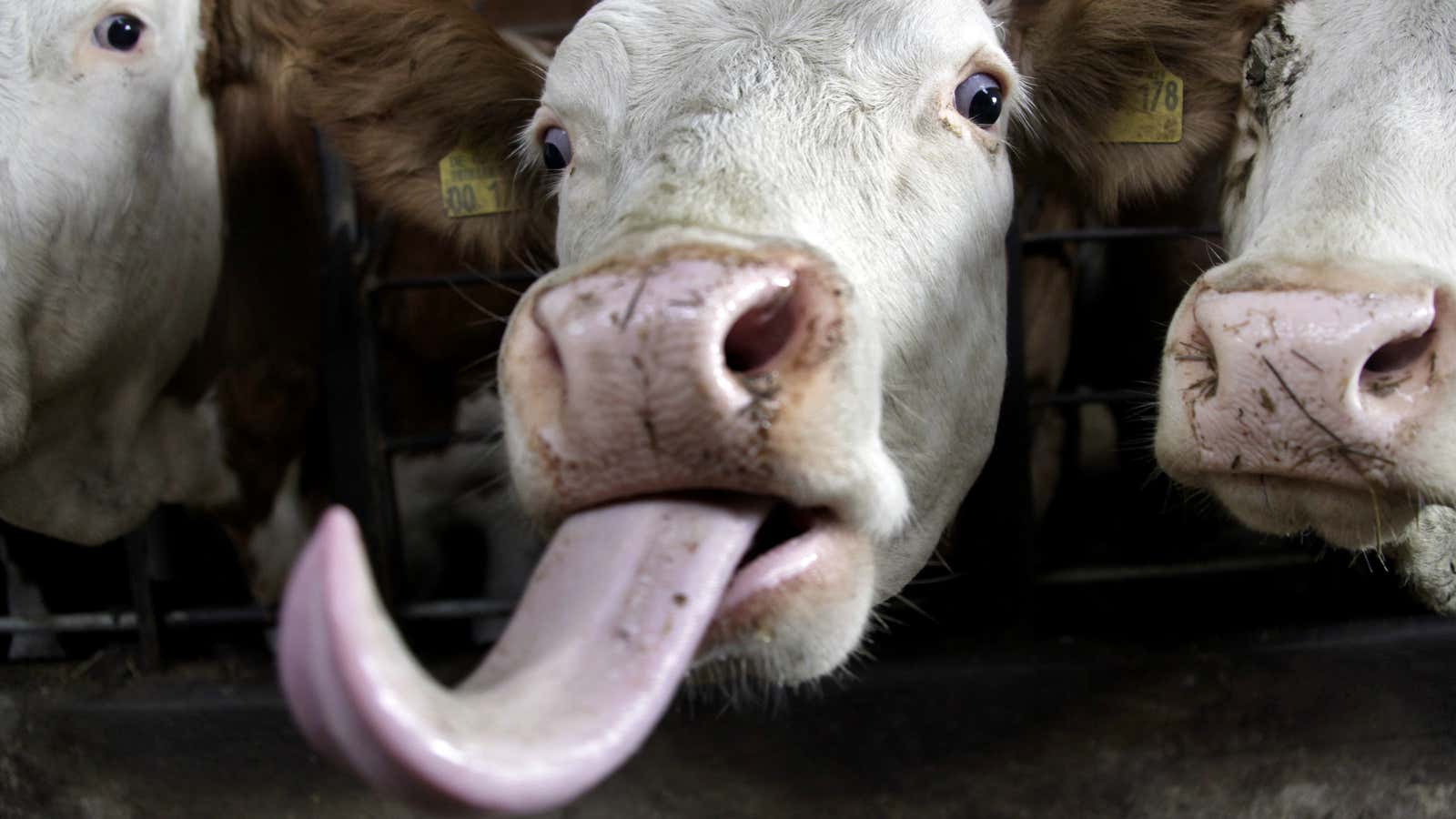Yeah, we’ve “got milk.” Way too much.
One might presume that America’s massive milk surplus is indicative of US dairy farmers having more cows than they used to. More cows, more milk—right? The reality is the opposite. US milk producers have become so good at what they do, that today they’re making almost 400% more milk with nearly 60% fewer cows than in the 1930s.
In 2015, the average dairy cow produced just over 22,000 pounds of milk, far more than one did eight decades ago.
What gives? A combination of technological advancements and human ingenuity seems to have made the dairy industry too smart for its own good.
Around 1950, the dairy industry began to experience significant change. Farmers turned to artificial insemination, allowing them to get cows pregnant more often, thus boosting per cow milk production while reducing the size of the dairy herd. Feeding regimens also changed, as cows were found to produce a lot more milk on mostly grain diets rather than grazing. The change in diet allowed farmers to keep cows indoors, maximizing quick access and use of the animals even during the cold winter months.
Then farmers began toying with the gene sequencing of cattle, selecting out cows with higher udders (which produce more milk), stronger legs for standing, and high fertility rates. The Holstein cow that’s primarily used on farms today is the product of a genome that’s been altered by about 22% over the last 40 years, according to Modern Farmer.
Ordinarily, this kind of efficiency would be applauded. But in America it’s become an expensive problem. That’s because most milk production benefits from government subsidies and protection.
In August, the US Department of Agriculture announced it would spend $20 million (so far it’s spent $7 million) to buy up 11 million pounds of surplus cheese—a move designed to prop up the country’s dairy producers, who were struggling with too much milk and thus low milk prices as well as a sluggish export market. It happened again earlier this week (Oct. 11), when the USDA announced it was spending another $20 million. The agency cited low milk prices, too much supply, and too little demand. Taken together, these factors have caused dairy revenue to drop 35% over the last two years.
While most of the government cheese will be shipped to food banks, the purchases provide only short-term relief for dairy farmers—who have literally dumped more than 40 million gallons (paywall) of excess milk in 2016 alone, according to The Wall Street Journal. Moreover, that $40 million exposes a larger supply-demand imbalance.
Between 1995 and 2015, production of fluid milk increased by 34% to more than 208 billion pounds. In that same time period, US milk consumption per capita fell by more than 24% to 155 pounds. Other dairy product categories—with the exception of yogurt—have remained relatively stable.
US agriculture secretary Tom Vilsack this week said that growth in the American dairy sector is largely contingent (pdf) on future trade deals, including the politically volatile Trans-Pacific Partnership, which many farmer groups are hoping will pass in president Barack Obama’s lame-duck session.
Until then, the dairy industry will continue to lean on US taxpayers to foot the bill for out-of-control production of a product with demand that is leveling off.




